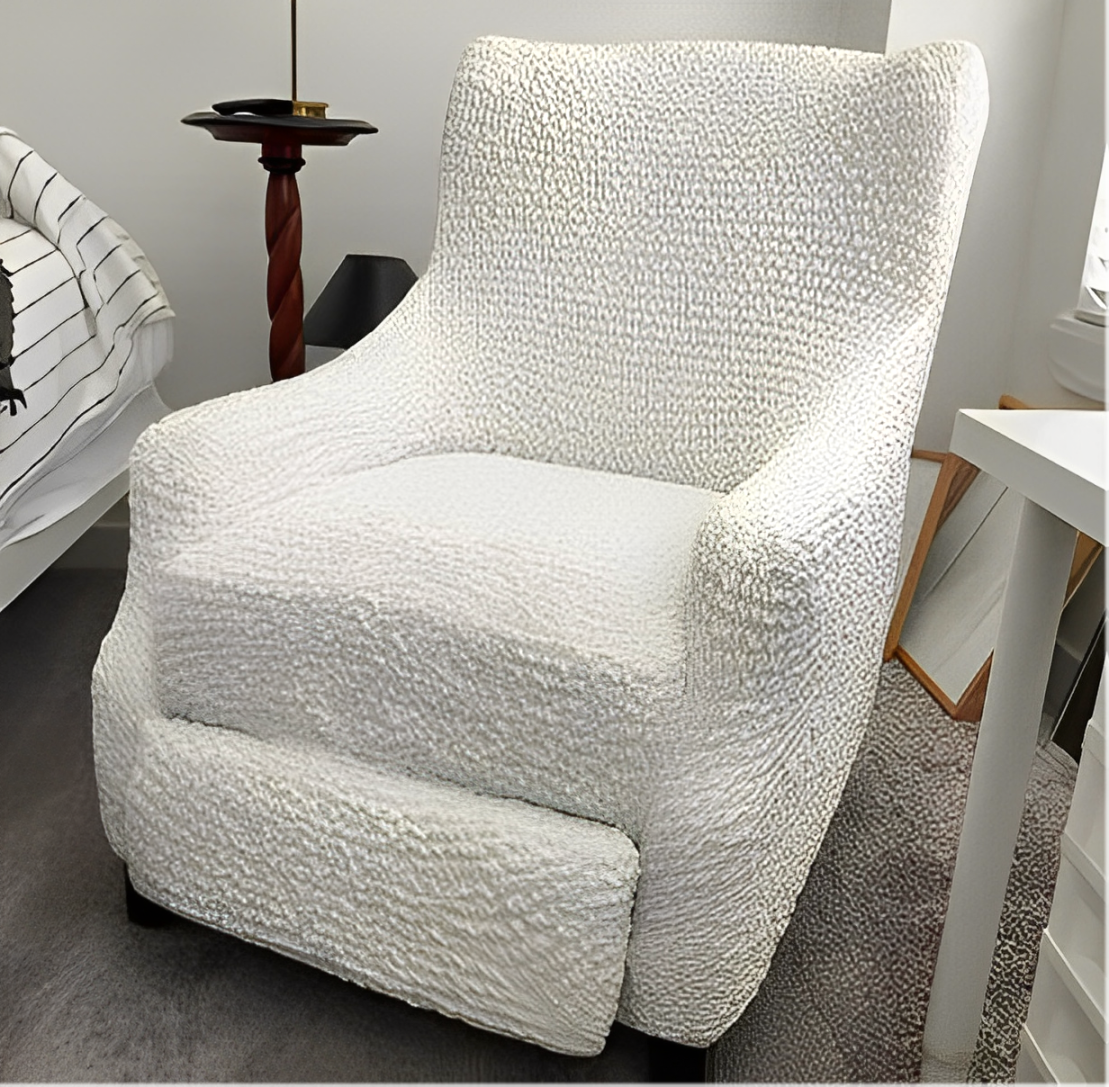In the rhythm of home life, the couch plays a leading role. Its constant use, however, leaves behind a subtle residue of our lives — dust, skin cells, food crumbs, and the occasional spill — all of which settle into the fabric of your cushion covers.
You might ask how to freshen up old couch covers. The great advantage of modern furniture is that most of them are designed to be fresh. The significant caveat is that a single misstep in the cleaning process can lead to irreversible damage, leaving you with shrunken, faded, or distorted fabrics.
Knowing how to wash couch cushion covers correctly is a simple yet powerful skill that extends the life and beauty of your furniture. This guide provides a comprehensive roadmap, ensuring your sofa remains a clean, fresh, and inviting centerpiece for years to come.
Deciphering the Care Label

Before water ever touches fabric, your most critical task is to locate and interpret the care label. Ignoring its directives is the most common precursor to a cleaning disaster. The label provides the answers to the maximum safe water temperature, the appropriate washing method, and the strict limitations for drying.
A Practical Decoder for Care Symbols
While the array of symbols can seem like a cryptic language, you only need to understand a few key icons:
- Machine Washable (a tub): Pay attention to the dots inside, which indicate temperature: one for cold, two for warm, three for hot.
- Hand Wash Only (a tub with a hand): The mechanical agitation of a machine can cause pilling, fraying, or distortion of the weave.
- Dry Clean Only (a circle): Attempting to wash these covers can cause irreversible damage, including severe shrinking, bleeding of dyes, or a complete change in the fabric's texture.
- Bleach Instructions (a triangle): An empty triangle means chlorine bleach can be used with caution. A triangle with a cross through it means all types of bleach, including oxygen-based "color-safe" bleaches, should be avoided.
Understanding Fabric Features
While the care label is the final authority, understanding the general nature of common upholstery fabrics helps you anticipate their behavior before washing couch covers.
- Cotton & Linen: These natural fibers are durable and breathable, but are notoriously prone to significant shrinkage when exposed to high heat. A cold wash cycle and air drying are essential.
- Polyester & Microfiber: washing polyester couch covers and microfiber ones is straightforward, as these synthetic fabrics are the resilient workhorses of the furniture world. They are often stain-resistant, quick-drying, and less prone to wrinkling. But you still need to follow the care labels.
The Machine Washing Protocol: A Step-by-Step Guide

Can you wash couch cushion covers in the washing machine? Look at the care label. If it grants permission for machine washing, you can proceed with confidence. This method is ideal for washing removable couch cushion covers and, when done correctly, yields fantastic results.
Phase 1: Meticulous Preparation
- Unzip and remove the cover. Ensure all zippers are fully closed and any hooks or buttons are secured to prevent them from snagging and tearing the fabric during the cycle.
- Take the cover outdoors and give it a firm, vigorous shake. This is a highly effective, yet simple, first step for dealing with pet hair and general couch cleaning.
- Identify the type of mark to figure out how to remove stains from the couch fabric effectively. For greasy residues like those from pizza or butter, a small drop of clear dish soap can be gently worked into the fibers. For organic stains (like wine, coffee, or milk), an enzyme-based pre-treatment spray is ideal.
Phase 2: Optimal Machine Configuration
- Washable couch cushion covers need ample room to move and agitate freely to get thoroughly clean. Overloading results in uneven cleaning and deep-set wrinkles.
- Hot water can set protein-based stains (like milk or blood) permanently, cause dyes to bleed, and is the primary agent of fabric shrinkage. Use lukewarm water only if the care label explicitly recommends it for heavily soiled items.
- Select gentle cycles on your machine for a slower agitation and a slower spin speed. This gentle motion is precisely what your machine-washable slipcovers need to avoid unnecessary stress and wear on the fibers.
- Choose liquid, safe detergents for upholstery. Powdered detergents can sometimes leave a residue if not fully dissolved in cooler water. Crucially, avoid bleach and fabric softener as they deposit a chemical coating on fibers that can break down their inherent stain-resistant properties and actually attract more dirt over time.
Phase 3: The Critical Drying Process
This is the stage where many successful washes are undone. The golden rule for how to dry couch covers is unwavering: always opt for air drying.
- The intense, direct heat of a dryer is a primary cause of irreversible shrinkage. It can also set any lingering stains and, over time, weaken fabric fibers and any elastic components.
- Immediately after the wash cycle finishes, reshape the damp cover. Lay it on a clean, dry towel over a drying rack or several chairs. Good air circulation is the core principle of knowing how to air-dry couch covers properly. A fan can be used to expedite the process, especially in humid conditions.
Hand Washing Delicate Covers: The Art of Gentle Care

When the label mandates "Hand Wash Only," it's essential to follow this gentle method.
- Fill a bathtub or large basin with cool or lukewarm water. Add a very small amount of mild liquid detergent and swish to distribute.
- Submerge the cushion cover and allow it to soak for 15-20 minutes.
- Use gentle, rhythmic pressing and squeezing over the surface.
- Drain the soapy water, refill with clean, cool water, and gently press and swirl the cover. Repeat until the water is clear.
- Press the hand-wash sofa cover against the side of the tub to push out water.
How to Wash Sofa Covers for Non-Removable Cushions

For sofas with fixed, sewn-in cushions, your strategy shifts to in-place cleaning. This is the fundamental distinction between removable vs non-removable couch covers.
When dealing with fixed cushions, your cleaning toolkit is simple. Opt for a dedicated cloth cleaner or create your own solution by mixing one part white vinegar with three parts cold water. For more stubborn marks, a simple paste of baking soda and water can be highly effective.
The most critical rule is to always gently blot the stain using a clean, white cloth. Never rub, as this pushes the spill deeper into the fabric.
After cleaning, press the area with a dry towel to absorb excess moisture. To ensure the fabric dries thoroughly and to prevent any moisture from being trapped inside, use a fan or a blow dryer on its lowest, coolest heat setting to circulate air over the damp spot until it is completely dry to the touch.
If you have non-removable cushions but want to simplify future maintenance and add a layer of protection, consider using stretch slipcovers. They are an excellent solution for preserving the original fabric underneath and a stylish look on top while making routine cleaning as easy as tossing a cover in the wash.
Proactive Protection: Effective Tips to Minimize Cleaning

Preventative care is the most effective way to maintain your couch and reduce the frequency of deep cleans.
- Use the upholstery attachment to vacuum all cushion surfaces, crevices, and arms once a week.
- Establish clear guidelines about food and drinks on the couch to minimize risk.
- Make it a monthly habit to flip and rotate your cushions. This ensures even wear and tear and prevents one side from becoming permanently matted or faded.
- Manage sun exposure — it causes fabric fading. Use curtains, blinds, or UV-filtering window film during peak sunlight hours to protect the vibrant colors of your upholstery.
- Don't wait for a visible stain to appear. Wash removable covers every 3-6 months or even more frequently.
The ideal solution for households with children or pets is using Mamma Mia sofa covers. They act as a barrier against daily wear and tear, stains, odors, and pet hair. Simply remove and wash the cover according to its instructions, leaving your pristine original upholstery protected underneath.
Frequently Asked Questions (FAQs)

Is it ever safe to put couch cushion covers in the dryer?
It is one of the most common mistakes. The intense, uneven heat of a dryer is a primary cause of irreversible shrinkage, even on a low heat setting. It can also weaken elastic components and damage fabric fibers. Air drying is the only method with a guaranteed safe outcome.
What is a realistic washing schedule for sofa covers?
For general maintenance and hygiene, a wash every 3-6 months is a sensible guideline. However, you should always clean them immediately after any spill or stain incident. Adjust the frequency based on your household; homes with pets, children, or high traffic will naturally require more frequent cleaning.
How to clean couch cushion covers if they are permanently attached?
Focus on spot-cleaning. Use a cloth upholstery cleaner or a vinegar-water solution. Always blot stains gently—never rub. For odors, sprinkle baking soda, wait 15 minutes, and vacuum. After cleaning, ensure the area dries completely using a fan or blow dryer on a cool, low setting to prevent mildew.
Concluding Thoughts

Taking the time to learn about cleaning couch cushion covers at home correctly is a simple yet profound investment in the longevity and appeal of your furniture. By respecting the care label, choosing gentle cleaning methods over harsh force, and committing to the patience of air drying, you can confidently maintain a beautiful and tidy living space.
A well-cared-for couch does more than just anchor a room's decor; it creates a cleaner, healthier, and more welcoming environment for all the life that happens upon it. And if you’re already dealing with stains or pet messes, you might also want to learn How to Clean Your Couch guide to keep your home fresh and cozy.











